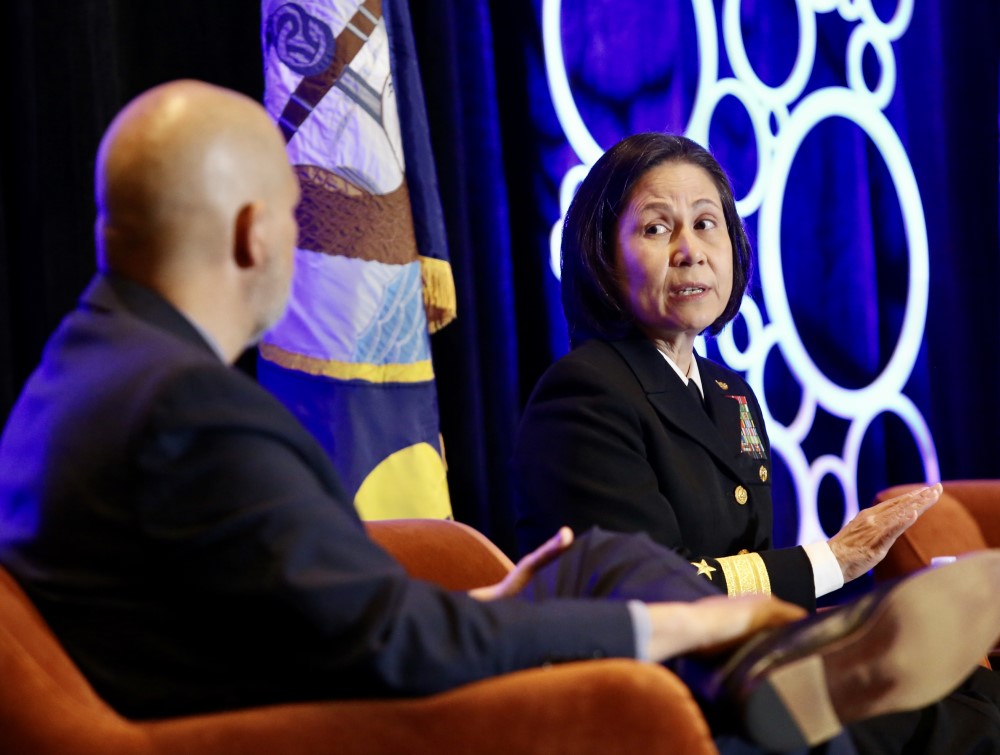
NATIONAL HARBOR, Md. — The biggest problem with the effort to develop a joint all-domain command and control system that would integrate all the sensors and communication devices of the U.S. armed forces and our allies and partners may be that there really is no joint process. That was the situation described by a panel of experts at the Navy League’s Sea-Air-Space expo on April 5.
The challenge for the Navy alone was how do the forces operate beyond line of sight when they know they will not have uncontested communications, “how does the Navy do that when we have a proliferation of sensors” and how do they leverage the sensors on one platform with those on another “in order to get the effects that we need,” said Rear Adm. Susan BryerJoyner, director of the Naval Cyber Security Division. And as the Navy continues its move to distributed naval operations and cannot mass its ships together, it further complicates command and control, she said. The Navy needs to do more exercises to begin testing solutions to those problems, she advised.
Andrew Mara, executive vice president of the Center for Naval Analysis, asked how with the aggregation of different sensors does anyone achieve effects, and how do they assure the logistical needs are met. “All of those pieces will have to come together,” he said.
And Todd Harrison, Director of the Aerospace Security Project at the Center for International and Strategic Studies, noted that the issue becomes more complex when you try to bring together allies and partners in the desired coalition operations, when each of them have their own unique systems.
Harrison suggested adopting the model of the F-35 Joint Program Office that has allied users of the F-35 included from the beginning of discussions.
Harrison warned, “This is not the first time we tried to do this,” listing a host of supposed joint programs that failed to produce compatible communication systems among the U.S. forces. “It didn’t work. I fear it won’t again.”
BreyerJoyner shared Harrison’s concern about the allies. Asking how would the Navy be able to fight as a joint and coalition force, which would be needed against China or Russia. “How would we share targeting information to get weapons on targets?”
Margaret Calomino, senior director of Strategy at L3Harris, one of the contractors that provide electronic systems to the U.S. and allied militaries, said it “would be good” if all the services would come together to determine what they needed. She also called for exercises to develop solutions.






